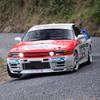My Rb30/26 Bnr32 Build ---> Project Horny :)
Announcements
-
Similar Content
-
Latest Posts
-
So for the wide band is a Bosch 4.9 correct for the Link G4+ along with a Can bus? Just get the Link gear or is generic ok too? Eg here: LINK LINK DIGITAL WIDEBAND CAN MODULE WITH BOSCH 4.9 SENSOR : KYP Performance House
-
Bit difficult to follow. Have a look below and see what the standard R32 layout was like. Note there was a restrictor in place immediately before "turbocharged pressure control solenoid" that, if removed, magically got you 1 bar boost.
-
I might be way off the mark here.. there must be a T junction under the manifold. That takes manifold pressure through a check valve prior to the T, one side splits out to this bleed off orifice, the other straight to the wastegate actuators.
-
Carrying out some engine due diligence before my first drive in a 260RS that has been in storage for 10+ years, and found two lines that are susposed to be plumbed into the boost control solenoid. One of the lines (the wastegate boost supply line) to actuate the gates, had a bolt in one end blocking it. The other line (main boost signal line) from the very rear of the intake manifold (RB26DETT) and runs up to the boost controller had this pill in the end of it as seen in photos. Other than the obvious (T28 Ceramic turbos might well be cooked) Can anyone shed any light on if there is any validity at all with this mod, bleeding a constant fixed rate of manifold boost pressure off through this 3mm hole? Is it deliberate? Was this a 90s Jap mod done to RB26's? Or has someone just fitted this without any idea of what happens to ceramic T28s if they are not gate controlled?
-








Recommended Posts
Create an account or sign in to comment
You need to be a member in order to leave a comment
Create an account
Sign up for a new account in our community. It's easy!
Register a new accountSign in
Already have an account? Sign in here.
Sign In Now